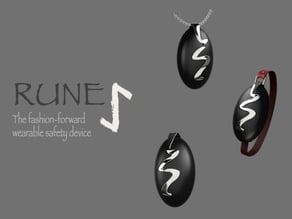
You agree to provide Sponsor with any proof of eligibility requested by Sponsor and your refusal or failure to timely provide such proof may result in your disqualification from the Contest. Sponsor reserves the right to verify your eligibility. Contestants are subject to all notices posted online, including but not limited to, Sponsor’s Terms of Use. The Contest is subject to all federal, state and local laws and regulations and is void where prohibited, taxed, or restricted by law. Please see the “ACKNOWLEDGMENT” section in these Official Rules for details. All communications with respect to the Contest should be directed to the Sponsor at the foregoing address or to MAY ENTER CONTEST: The Contest is open to natural persons 18 years of age and over at the time of entry (“Contestant” or “You”) who have a MakerBot user ID and account on (“Sponsor Account”) and reside in the United States of America. SPONSOR: The Contest is sponsored by MakerBot Industries, LLC (the “Sponsor”), with offices located at One MetroTech Center, 21st Floor, Brooklyn, New York 11201, and is in no way sponsored, endorsed or administered by, or associated with any social media website or platform, including, but not limited to, Facebook, Twitter or Instagram. All entries must be received no later than Saturday,, at 11:59 PM EDT.

By entering the Contest, Contestants accept and agree to be bound by these Official Rules.ĬONTEST PERIOD: The Contest will begin on Wednesday, and end on Saturday,, at 11:59 PM EDT (the “Contest Period ”). Before entering the Contest, each Contestant (as defined below) must review and be bound by these official Contest rules (“Official Rules”) as set out below.
AUTODESK FUSION 360 CHALLENGE SOFTWARE
Through this specialization, you’ll learn the foundations of applying computer aided design (CAD), computer aided engineering (CAE), and manufacturing principles while developing your technical skills within Autodesk Fusion 360.GENERAL: The Autodesk Fusion 360 Challenge contest (the “Contest”) asks participants to use Autodesk Fusion 360 software to design one of the following (each a “Design Option”): (1) a wearable to keep someone safe while commuting, (2) a desktop notification device, or (3) a transforming office desk organizer for compact workspaces. This means not only understanding engineering principles that govern the title and role, but also perfecting the toolsets needed to design and develop products. These trends have forced today’s engineers to broaden their skillset to be successful.Įngineers today are required to be on the cutting edge of design innovation. Their role has moved away from an individual responsibility to working as part of a collaborative engineering team, executing tradeoffs with both engineering and business stakeholders to meet project goals. Engineers need to factor in broader concerns such as cost, procurement, sustainability, manufacturability, and serviceability. These tasks are centered on form, fit, and function. Products have become complex and engineers are more frequently asked to leave specialized roles and to take on a wide variety of tasks that are beyond their traditional responsibilities. The demand placed on today’s engineers goes above and beyond the job description. Practice creating toolpaths for manufacture. Create detailed drawings for manufacturing. Identify manufacturing methods based on part inspection.

Even if the end goal as an engineer isn’t to fabricate your own parts, it’s a valuable skill to understand how things are made and what design decisions can ultimately affect how something is created.Īfter taking this course, you'll be able to: We'll take a closer look at design and detail for manufacture and create toolpaths to cut parts.

Each piece represents a certain tolerance and put together, things might not work or fit if they weren’t accounted for in the design. In many cases, the end product is made up of an assembly of different pieces to simplify manufacturing or to achieve specific design goals.

With manufacturing at the core of a design, we're able to fix potential problems in the design phase rather than after production. With design for manufacturing, our design process focused on the design over its cost, but always keeping in mind how parts needed to be made.


 0 kommentar(er)
0 kommentar(er)
